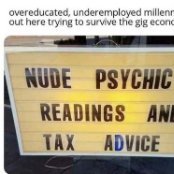the psi rating on sidewalls?
-
Recently Browsing 0 members
- No registered users viewing this page.
-
Topics
-
-
Popular Contributors
-
-
Latest posts...
-
27
Thai - Cambodia Conflict Cambodian Forces Attack Leaves Surin Hospital in Ruins
Why send in the IDF to arrest them? Bombing all the kids again getting treatment for being bombed previously is a cowardly act. -
9
Online appointment for extension of stay based on marriage..
The thread concerns CW. Appointments at CW work like clockwork. Brilliant. The face that you were poorly prepared and required more documents was the issue. Not immigration or having an appointment.. Be aware of the requirements. -
8
Transport Epic Progress: Bangkok's MRT Tunnelling Under Chao Phraya
Where's the map. Some of us haven't a clue of this project's location. A simple mud map would be appreciated -
-
18
My friend has an infection down there.
It was a death sentence. IIRC the final stage was general paralysis, as the spirochete attacked the brain. I don't understand why people continue to risk their health by not using condoms. There are now antibiotic-resistant STD's. Mycoplasma and gonorrhea mostly.- 1
-

-
52
Middle East Netanyahu Pushes for Military Action to Free Hostages
The brave Palestinian journalists that are on the ground. The Jews in Israel have been targeting them as well. Here is a list of all of the journalists killed in Gaza reporting on the genocide. https://en.wikipedia.org/wiki/List_of_journalists_killed_in_the_Gaza_war Not even during the Holocaust were journalists and hospitals targeted in this way. It is a disgrace.
-
-
Popular in The Pub







Recommended Posts
Create an account or sign in to comment
You need to be a member in order to leave a comment
Create an account
Sign up for a new account in our community. It's easy!
Register a new accountSign in
Already have an account? Sign in here.
Sign In Now